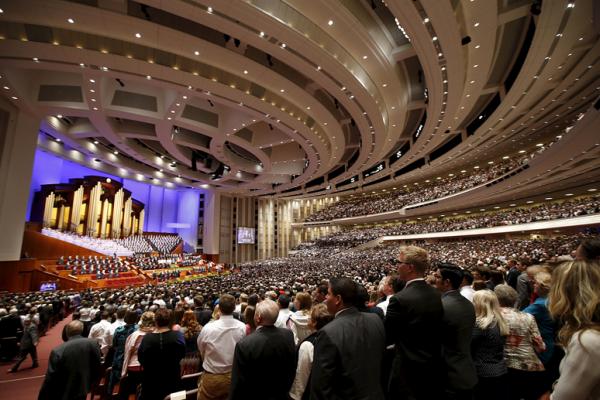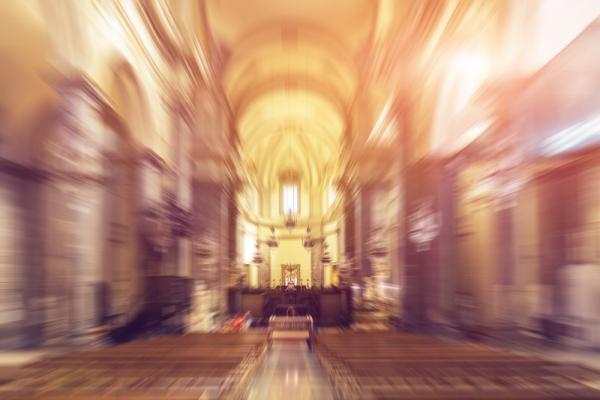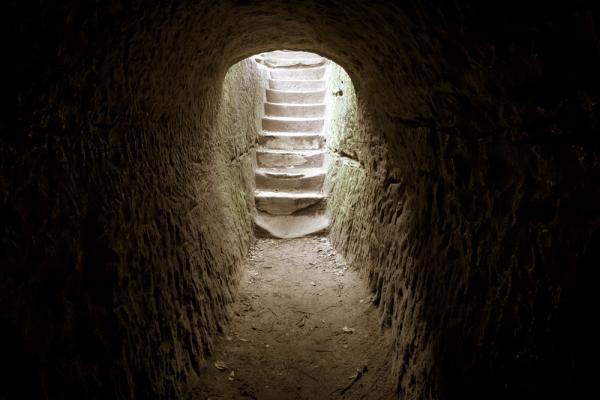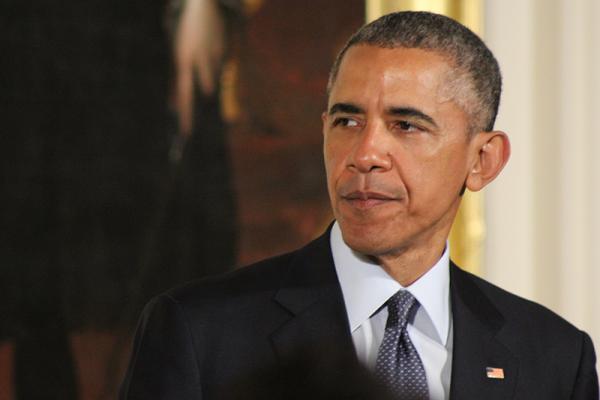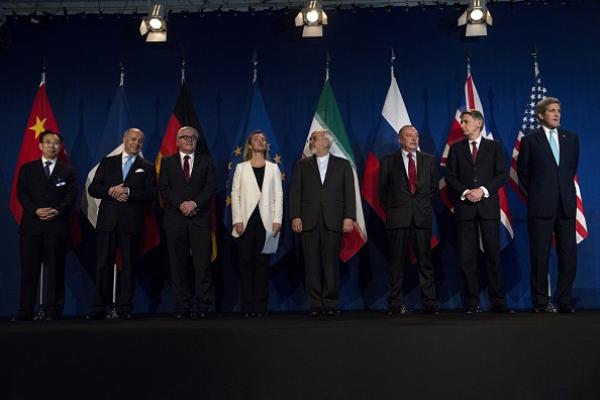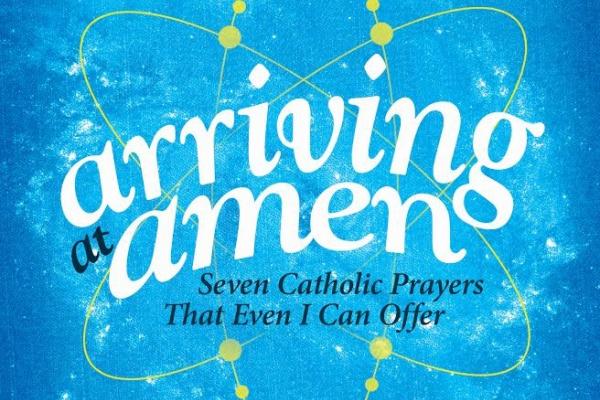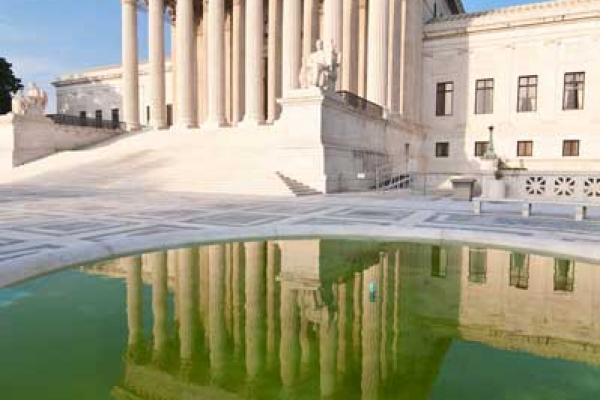Mormons lean more heavily toward the Republican Party than any other major demographic group — whether clustered by race, age, gender, educational attainment, or religion.
So says a study released April 7 by the Pew Research Center, based on more than 25,000 survey interviews conducted nationwide in 2014.
The survey shows that 70 percent of Mormons lean Republican, compared with just 22 percent who tilt Democratic. That 48-point gap is greater for the GOP than margins provided by any other single group.
Behind Mormons in GOP support are white evangelical Protestants, who give the party a 46-point edge; white Southerners, a 21-point GOP advantage; white men with some college education or less, also 21 points; whites, 9 points; and the “silent generation,” ages 69 to 86, 4 points.
Groups that lean Democratic most heavily are blacks, who give that party a 69-point edge; Asians, a 42-point margin; religiously unaffiliated, 36 points; post-graduate women, 35 points; Jews, 30 percent; Hispanics, 30 points; and the millennial generation, ages 18 to 33, 16 points.
“Obviously, Mormons are one of the strongest groups for Republicans, right on par with white evangelicals. Both groups are about three times as likely to lean towards the Republican Party,” Jocelyn Kiley, associate director of the Pew Research Center, said.
“That’s been the case for a long time.”
 In the midst of my family’s Easter celebration yesterday, I decided to check Facebook. Most of my friends posted comments like “Happy Easter!” and shared pictures of their celebrations.
In the midst of my family’s Easter celebration yesterday, I decided to check Facebook. Most of my friends posted comments like “Happy Easter!” and shared pictures of their celebrations.
But this meme also appeared on my feed:
The meme is attributed to Richard Dawkins’ Foundation for Reason and Science and is meant to debunk Christianity and Easter as just another example of an ancient myth. The reasoning goes like this – Christianity has so much in common with other ancient myths, so how can we take Christianity seriously?
The meme shows the ancient Assyrian and Babylonian goddess Ishtar and makes a few claims against Christianity. The first is that “Ishtar” was pronounced “Easter.” The second is that Ishtar was the goddess of fertility and sex and so her symbols were an egg and bunny. The meme concludes that Easter is merely a copy of the Ishtar myth and its roots are “all about celebrating fertility and sex.”
Megan McArdle of the Daily Beast did an excellent job debunking the meme.
While reflecting upon and celebrating Easter, I did quite a bit of thinking about the controversies surrounding so-called “religious freedom” bills that have been popping up recently, most notably Indiana and Arkansas. In a recent interview on the Family Research Council radio program, “ Washington Watch with Tony Perkins," former Arkansas Governor Mike Huckabee discussed the backlash against these two pieces of legislation.
Huckabee asserted that gay-rights activists are seeking the eradication of Christian churches. According to Huckabee, “It won’t stop until there are no more churches, until there are no more people who are spreading the Gospel.”
Christianity has been and continues to be the dominant form of religious practice and expression in America. Often the rhetoric used by members of dominant groups insinuates that when people outside of their dominant group ask for equal rights and the opportunity to participate fully in American life, they are actually seeking to eradicate the existence of that dominant group.
I’ve celebrated Easter before. My whole life I’ve dressed up, colored eggs, gone to church.
But this year was different. This year, I realized resurrection.
I’m not sure how the realization came.
Maybe it came because this was the first time I gardened. My mother once said, “Gardening is prayer.” I never believed her until I physically saw the transformation of dead earth into mustard greens and zucchini plants. I never realized how good the pulse of the sun felt on my back after months of gray. I never saw seeds push through the darkness of soil and become new life — until this year, when I realized resurrection.
Maybe it came because this was the first time I’ve ever felt depression. This winter was the first time there were no windows in the tomb. The first time I held myself crying in the shower wondering if the emptiness would stop. This year was the first time I saw Lent as a season to sit in deep sadness. The first time I realized that Mary Magdalene sat at the tomb simply because she was just so sad.
Maybe it came because this was the first time I’ve fully embraced a Christian community. The first time I’ve intimately walked through the liturgical season with the same people. The first time I shared the miracle of Christmas and the deep sadness of Lent in the eyes of other vulnerable humans. The first time I’ve attended an entire week of Holy Week services. The first time I sat in the dark on Good Friday after service ended and cried.
This year, I realized resurrection and I’m not exactly sure why.
President Obama turned both personal and preachy April 7 during his annual Easter Prayer Breakfast, which he has hosted at the White House six times since he was elected.
The long list of Christian leaders attending included Sojourners’ Jim Wallis, National Association of Evangelicals President Leith Anderson, Roman Catholic Cardinal Donald Wuerl, the Rev. Al Sharpton, retired Episcopal Bishop Gene Robinson, civil rights veteran the Rev. C.T. Vivian, and African Methodist Episcopal Bishop Vashti McKenzie. The Rev. Amy Butler of New York’s Riverside Church gave the opening prayer.
Here are four memorable statements from the event:
1. Though he said, “I am no preacher,” he almost preached:
“Even as we grapple with the sheer enormity of Jesus’ sacrifice, on Easter we can’t lose sight of the fact that the story didn’t end on Friday,” he said.
“The story keeps on going. On Sunday comes the glorious resurrection of our savior.”
Why do we engage with art? What is about a poem, painting, film, or photograph that can sometimes make them rank among the most impactful experiences of our lives? Sure, skill has a lot to do with it. Aesthetics and story do, too. But one of the things, perhaps the biggest thing that makes art art, and which gives it that extra emotional oomph, is perspective.
Perspective can mean many things. It can mean the point of view from which a story is told. It can mean the way in which something is presented visually; looking down from above, for example, or up from below. More expansively (and when it’s done well), perspective means using all of these to express the worldview of the artist, communicating their thoughts about a subject, or a place, or even just life in general, by what they choose to show us and how they choose to show it.
The Salt of the Earth, Oscar-nominated this year for Best Documentary, is a film about Brazilian photographer Sebastião Salgado. But it’s also a film about perspectives. Not just Salgado’s, shown through his life and his art, but also the perspectives of the film’s two directors, the photographer’s son, Juliano Ribeiro Salgado, and German New Wave auteur Wim Wenders (the director of Wings of Desire and Paris, Texas). Each man approaches the subject with a different point of view — Salgado recounting his own experiences, Juliano as the son who grew up with an often absent father, and Wenders as a fellow artist and long-time admirer of Salgado’s work.
For Christians, Easter is not just a day — it is a season, and, indeed, a way of life. This week is Easter: Monday, Tuesday, Wednesday, Thursday, and so on. Likewise, hope — the message of Easter — is not a feeling, but rather a decision — a choice we make day after day. Hope isn’t easy, but the decision to hope keeps the world going.
Now we have a choice to make: a decision whether to pursue a tough diplomatic process for peace to prevent Iran from developing a nuclear weapon. The United States and Iran — along with the U.K., Germany, France, Russia, and China — now have the beginning framework of a deal that could accomplish just that. But we would have to give it a chance. Much has to be worked out by the June 30 deadline, and it won’t be easy.
Should we give this hope for peace a chance? I believe Christians should answer yes. Here’s why.
Arriving at Amen, the forthcoming memoir-infused guide to spiritual practices by Leah Libresco, reads like a fantastic series of blog posts combined into a less-spectacular guide for small groups getting their hands dirty with spiritual practices. Oddly, Leah seems to respect her audience a bit too much by assuming that they are as geeky and morally driven as her. This limits Arriving at Amen’s usefulness in the pastoral context, which it seems marketed and designed for — but makes it more interesting for me.
Leah has a great internet presence — from her blog Unequally Yoked to a new radio show Fights in Good Faith and now reporting and doing analysis for FiveThirtyEight. Leah is, basically, a very liberally well-educated math nerd who turns to religion in the same way that she turns to everything – full-voiced and with the intention to win.
Arriving at Amen riffs on some historic spiritual practices, all billed as Roman Catholic (though I, as a cranky reformed Presbyterian, can still get some mileage out of them) such as the Divine Office, examen, lectio divina, and several others.
Leah has lots of helpful tips here. The Divine Office (a set structure of prayers that I’ve found healthy in my own life) can become a means to organize your time and a way to transition to and from work on your commute. She suggests using the Jesuit daily self-reflection of the examen as way to proactively think about virtues that you can cultivate rather than as another opportunity to spiral into guilt. She even rethinks lectio divina, the practice of meditation on scripture, by suggesting that the reader translate scripture into another language as she does with American Sign Language.
All of this is helpful advice — but it also demonstrates the scattershot nature of Arriving at Amen.
Little by little, the direct sun of spring is vanquishing the snow of this long winter, and new life is starting to emerge.
Something similar is happening in my home state of Indiana, where the darkness met behind closed doors to conspire against certain citizens in the name of religion.
For a time, hatred prevailed. But then a more-direct sun began to shine in the American heartland, and people took notice of what the Republican-controlled Legislature and cowardly governor had done.
The people spoke out. It started with leaders in the tech community (Salesforce, Apple, Angie’s List) and, to my amazement, pillars of the sports establishment, such as the NCAA and NASCAR. Soon, citizens across Indiana and the nation condemned the state’s so-called Religious Freedom Restoration Act as little more than legalized discrimination.
Republican officials and religious organizations dominate a growing list of more than 60 groups urging the Supreme Court to uphold state bans against same-sex marriage.
The flood of “friend of the court” briefs arriving at the court by last week’s deadline easily made the upcoming case the most heavily lobbied in the court’s recent history. Earlier this month, more than 70 briefs were filed by proponents of gay marriage, including one signed by more than 200,000 people.
Sixteen states led by Republican governors were among those calling for the bans in Michigan, Ohio, Kentucky, and Tennessee to be upheld. Among them were nine states where same-sex marriage bans have been struck down by federal courts — an indication that the battle there and elsewhere will be renewed if the justices uphold the bans.
“How much better for this issue to play out, state-by-state, with citizens locked in urgent conversation,” one of the briefs says.
